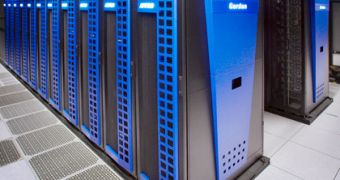The San Diego Supercomputer Center (SDSC) is preparing to unveil the Gordon supercomputer in January of 2012, which will become the first SSD-based HPC system in the world as well as the fastest data crunching machine of its kind ever built.
The system is built around solid state drives delivering a total 300 terabytes of flash memory and is capable of reaching 36 million IOPS (input/output operations per second).
This is a large departure from the previous record of 4.2 million IOPS and, to put things in perspective, SDSC has said that this equals with the capability to ingest about 220 movies per second from Netflix.
Put in more scientific terms, this means that Gordon will have the ability to hold 100,000 entire human genomes in its flash memory system, which is more than the number of genomes that are available so far.
“Gordon is an extremely important resource because it is dedicated to solving critical science and societal problems currently overwhelmed by the vast amount of data generated by the digital devices of our era,” said University of California, San Diego Chancellor Marye Anne Fox at the formal launch of SDSC’s newest supercomputer, held December 5 at SDSC.
“Just like SDSC, Gordon will be a central point of collaboration. Today’s global challenges are increasingly interdisciplinary in nature, and require an interdisciplinary approach to solve,” concluded the University’s Chancellor.
While Gordon’s flash capabilities are no less than outstanding, the rest of the system is equally impressive as this was designed to provide scientists with four petabytes of disk storage space, 64 terabytes of random access memory and over 280 teraflops of compute power.
This would rate it as the 48th fastest supercomputer in the world in the TOP500 list. The system will be fully online in January of 2012 and its costs are estimated at $20 million US.

 14 DAY TRIAL //
14 DAY TRIAL //